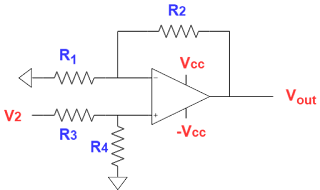How to Prepare for Texas Instruments Analog Profile
Texas Instruments has been making progress possible for decades. TI is a global semiconductor company that designs, manufactures, tests, and sells analog and embedded processing chips. Their approximately 80,000 products help over 100,000 customers efficiently manage power, accurately sense and transmit data and provide the core control or processing in their designs, going into markets such as industrial, automotive, personal electronics, communications equipment, and enterprise systems. Their passion to create a better world by making electronics more affordable through semiconductors is alive today as each generation of innovation builds upon the last to make our technology smaller, more efficient, more reliable, and more affordable – opening new markets and making it possible for semiconductors to go into electronics everywhere. They think of this as Engineering Progress. It’s what they do and has been doing for decades.
TI also has a Digital domain, but in this blog, we shall discuss mainly the Analog domain and the preparation strategy to crack it. If you love Analog, Microelectronics, Devices then TI is one of the best places to work and learn. TI has an awesome work culture.
Recruitment Procedure
TI has a fixed procedure for the job as well as for the internship.
- Online test: It consists of 20 aptitude questions in 20 minutes and 20 technical questions (depending upon profile) in 30 minutes.
- Technical interview: 1/2 rounds of Pure Technical interview. The interview will be more interactive. They will fully cooperate with you and will give you hints if you are stuck at some point.
- Human Resource - HR interview: (General question) about yourself, why not Higher Studies? Why TI? What are your strengths and weakness?
TI Job Profiles
- Audio
- Energy automation
- Electronic point of service
- Industrial automation
- Imaging
- High speed
- Interface
- Clocking
- Medical
- High volume linear
- Storage
- Power supply
- Linear power
- Battery management
How to prepare for the Online Test & Technical Interview for internship/ job in TI?
1. PYQs
2. Basic Network Theory (**Most Important**)
- Basics of R,L, C
- Step (voltage/current) response of 1st order RC/RL circuits (intuition method) [They keep on adding the components trying to make it complicated]
- Pulse (voltage/current) response of 1st order RC/RL circuits (intuition method)
* T <<RC
- Finding pole/zero by inspection and draw bode plot (intuition method)
- Charge sharing between capacitors (with and without initial condition)
- Identification of type of Filters (LPF/HPF/BPF/BSF/APF)
3. Basic Analog Circuit
- Regulators
- Barkhausen Condition & Positive feedback circuits (Oscillators, Multivibrators)
- Standard OPAMP circuits * Inverting Amplifier
- Sign of input terminals of an OPAMP
- Analysis of OPAMP circuits with different non-idealities
* Non-inverting Amplifier
* Adder
* Subtractor
* Integrator
* finite BW
* finite input & output resistance
* finite input-referred offset voltage
- Identification of Positive and Negative feedback
- Circuits with multiple feedbacks and which feedback is dominant
4. Control System
- Bode plot (relation between dc gain, gain at infinite frequency, and number of pole-zero)
- Stability (Gain Margin, Phase Margin, Gain crossover frequency, Phase crossover frequency)
5. Microelectronic Circuit
- Basic working principle, I-V characteristics and various region of operation of diode, BJT, MOSFET
- Gain of different MOSFET(or BJT) based amplifiers (intuition method without small signal model)
* CG
* CD
* Cascade
* Cascode
- Looking in impedance at any node of a MOS/BJT circuit (intuitively without small signal model)
- Different architectures of current mirrors and headroom of each transistor
- Differential amplifier with passive and active load, Differential gain and Common-mode gain, CMRR
- Internal transistor-level circuit of an OTA (Operational Transconductance Amplifier)
- Different architectures of OTA and pole zeroes
* Telescopic
* Folded Cascode
* Regulated Cascode
- 2 stages OTA with Miller compensation and dominant pole
- Noise and Mismatch (current mirror and diff pair) analysis
7. Signals & Systems (Not that important)
- Basics of LTI systems
- Convolution
- Frequency domain- CT, DT, DTFT, DFT
8. Switch Capacitor circuits with two non-overlapping clocks
Where to study from? What are the available resources?
1. Online Video Lectures:
- Chembiyan T Passive Devices (Intuitive analysis of RC, RL, LC, RLC circuits)
- Chembiyan T Active Devices (Intuitive analysis of MOSFET circuits)
- Nagendra Krishnapura Basic Electrical Circuits (Strong fundamentals)
- Nagendra Krishnapura Analog Circuits (Strong fundamentals)
- Nagendra Krishnapura Analog IC Design (Advanced)
- Razavi 1 Lectures (Beginners)
- Razavi 2 Lectures (Beginners)
2. Online Blog:
- Analog Intuition (GATE & VLSI) (Intuitive Analysis)
- Gate Addicted Facebook Page (PYQs of TI)
4. Books:
- Analysis and Design of Analog Integrated Circuits by Grey & Meyer (One of the best books in Analog)
- Design of Analog CMOS Integrated Circuits by Behzad Razavi (For problem-solving)
- Design of Analog CMOS Integrated Circuits by Behzad Razavi - Solution Manual (To check with the solutions)










